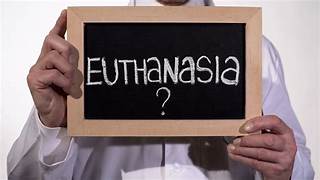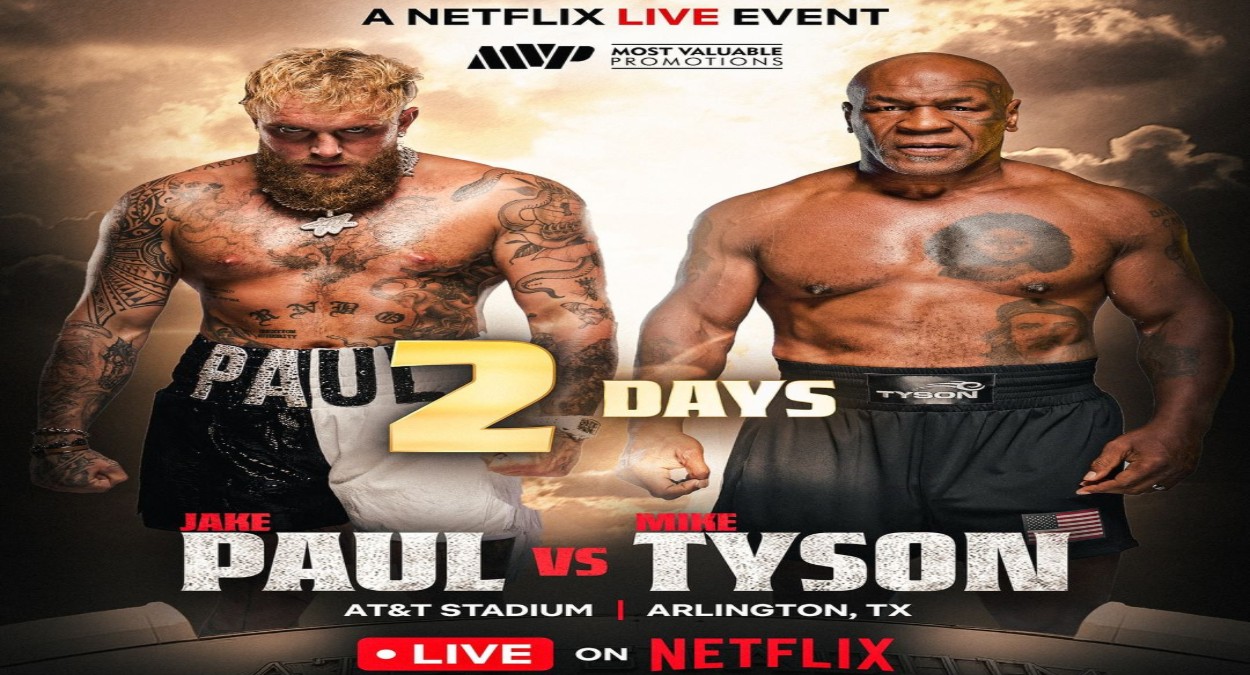
निश्चित रूप से, यहां Euthanasia, इच्छामृत्यु पर कुछ मुख्य बिंदु दिए गए हैं:
Euthanasia, इच्छामृत्यु किसी व्यक्ति के दुख को दूर करने के लिए जानबूझकर उसके जीवन को समाप्त करने की प्रथा है।
- प्रकार: इच्छामृत्यु स्वैच्छिक हो सकती है, जहां व्यक्ति इसका अनुरोध करता है; अनैच्छिक, जहां यह व्यक्ति की इच्छा के विरुद्ध है; या गैर-स्वैच्छिक, जहां व्यक्ति निर्णय लेने में असमर्थ है।
- कानूनी स्थिति: इच्छामृत्यु से संबंधित कानून दुनिया भर में व्यापक रूप से भिन्न हैं। कुछ देशों और राज्यों ने कुछ शर्तों के तहत इच्छामृत्यु को वैध बना दिया है, जबकि अन्य ने इसे पूरी तरह से प्रतिबंधित कर दिया है।
- नैतिक बहस: इच्छामृत्यु मानव जीवन के मूल्य, स्वायत्तता और जीवन समाप्त करने में स्वास्थ्य देखभाल पेशेवरों की भूमिका के बारे में जटिल नैतिक प्रश्न उठाती है।
- के लिए तर्क: समर्थकों का तर्क है कि इच्छामृत्यु व्यक्तियों को सम्मान के साथ मरने, पीड़ा से छुटकारा पाने और अपने जीवन पर स्वायत्तता का प्रयोग करने की अनुमति देती है।
- विरुद्ध तर्क: विरोधियों ने दुर्व्यवहार की संभावना, जीवन की पवित्रता और अनैच्छिक इच्छामृत्यु या अन्य अनैतिक प्रथाओं की ओर फिसलन ढलान के बारे में चिंता जताई।
- विकल्प: प्रशामक देखभाल और दर्द प्रबंधन तकनीकों को अक्सर इच्छामृत्यु के विकल्प के रूप में प्रस्तावित किया जाता है, जो असाध्य रूप से बीमार रोगियों के लिए जीवन की गुणवत्ता में सुधार पर ध्यान केंद्रित करता है।
- जीवन के अंत की देखभाल: इच्छामृत्यु के आसपास की चर्चाएं अक्सर जीवन के अंत की देखभाल, अग्रिम निर्देशों और रोगियों के अपने उपचार के बारे में निर्णय लेने के अधिकारों पर बहस के साथ जुड़ती हैं।
- धार्मिक परिप्रेक्ष्य: कई धार्मिक परंपराओं में इच्छामृत्यु पर मजबूत विचार हैं, कुछ इसे नैतिक रूप से गलत बताते हैं और अन्य करुणा और पीड़ा पर आधारित सूक्ष्म पदों को स्वीकार करते हैं।
- सामाजिक प्रभाव: इच्छामृत्यु के गहरे सामाजिक प्रभाव हो सकते हैं, जो मृत्यु के प्रति दृष्टिकोण, चिकित्सा नैतिकता और स्वास्थ्य देखभाल निर्णयों में सरकार की भूमिका को प्रभावित कर सकते हैं।
आज मैंने एक ‘सर्च इंजन’ पर चिकित्सकीय सहायता प्राप्त कर ‘मृत्यु की खोज’ की. पहला संदेश जो सामने आया वह था ‘मुझे किसी से कैसे बात करनी चाहिए’. एक आत्महत्या हेल्पलाइन नंबर फ्लैश हुआ. मदद के लिए मुझे निर्देशित करने वाले कई लिंक के बाद, मुझे वह मिल गया जो मैं चाहती थी. एल्गोरिदम ने सोचा कि मैं अत्यधिक सोच रही थी और मदद की पेशकश की. जबकि आर्टिफिशियल इंटेलिजेंस के लिए चिकित्सकीय सहायता से मृत्यु अभी भी आत्महत्या है. यह क्या मामला है? इस पर वास्तविक दुनिया में भी दशकों से बहस चल रही है.
अंतर केवल इतना था कि मैं यह पता लगाने की कोशिश कर रही थी कि नीदरलैंड के एक गांव के 28 वर्षीय स्वस्थ व्यक्ति ने इसे चुनने के लिए क्या प्रेरित किया. सबसे दुर्लभ मामलों में से एक में, लड़की ने शारीरिक रूप से स्वस्थ होने के बावजूद इच्छामृत्यु का विकल्प चुना है. इसका कारण उसकी मानसिक स्थिति है.
लड़की का एक प्रेमी, दो बिल्लियां और एक ऐसा जीवन है जो पूर्ण लगता है. उसे मई में चिकित्सकों की सहायता से सुला दिया जाएगा. पिछले महीने ही देश ने पूर्व डच प्रधान मंत्री ड्रीस वैन एग्ट को उनकी पत्नी यूजिनी के साथ इच्छामृत्यु से मरने की अनुमति दी थी. वे दोनों 93 वर्ष के थे और असाध्य रूप से बीमार थे. हालांकि प्रधान मंत्री का मामला दुर्लभ नहीं हो सकता है. नीदरलैंड दुनिया के उन कुछ देशों में से एक है, जिसने मानसिक बीमारी के लिए इच्छामृत्यु को वैध कर दिया है.
नीदरलैंड के अलावा स्विट्जरलैंड और जल्द ही कनाडा ही एकमात्र अन्य देश है, जो कुछ समय से अंतिम अधिनियम में देरी कर रहा है. अमेरिका के केवल अल्पसंख्यक राज्य, जैसे कि मेन और ओरेगॉन, किसी भी प्रकार के MAID की अनुमति देते हैं. हालांकि कई अन्य ने इस पर बहस की है, और कोई भी इसे मानसिक बीमारी के लिए अनुमति नहीं देता है. भारत के सर्वोच्च न्यायालय ने 2018 में अपने ऐतिहासिक फैसले में, असाध्य रूप से बीमार रोगियों के लिए निष्क्रिय इच्छामृत्यु को वैध बना दिया. इससे उन्हें जीवन समर्थन उपायों को अस्वीकार करने की अनुमति मिल गई. साथ ही, लाइलाज कोमा में रोगियों के परिवारों को ऐसे उपायों को वापस लेने की अनुमति दे दी गई. भारत में मानसिक बीमारी को इसका कारण नहीं माना जाता है.
कुछ साल पहले, बेंगलुरु की एक महिला ने दिल्ली उच्च न्यायालय के समक्ष एक याचिका दायर की थी. इसमें अदालत से अपील की गई थी कि उसके दोस्त, नोएडा में रहने वाले 48 वर्षीय व्यक्ति को कथित तौर पर चिकित्सक की सहायता से इच्छामृत्यु के रूप में आत्महत्या करने के लिए स्विट्जरलैंड की यात्रा करने से रोका जाए. वह व्यक्ति 2014 से क्रोनिक थकान सिंड्रोम (अंतरराष्ट्रीय स्तर पर मायलजिक एन्सेफेलोमाइलाइटिस के रूप में जाना जाता है) से पीड़ित था. यह एक ऐसी बीमारी है, जिसमें परिश्रम के बाद अस्वस्थता, मस्तिष्क कोहरा, सिरदर्द, नींद में खलल, सांस की तकलीफ और सीने में दर्द होता है. यह कारण MAID के लिए योग्य नहीं है.
चिकित्सक-सहायता प्राप्त मृत्यु पर बहस के दोनों पक्षों में कई दृढ़तापूर्वक विचार हैं. इस विषय पर सामग्री और साहित्य की एक विशाल श्रृंखला प्रकाशित की गई है. इच्छामृत्यु के लिए, यह प्रक्रिया लाइलाज बीमारियों से पीड़ित लोगों को सम्मानजनक अंत देने का एक तरीका है.
उनका तर्क है कि विशेषज्ञ उपशामक देखभाल के बाद भी, कुछ मरने वाले लोग अभी भी गंभीर और असहनीय शारीरिक और भावनात्मक तनाव का अनुभव करेंगे. इच्छामृत्यु का विरोध करने वालों का कहना है कि यह ‘जीवन की पवित्रता का उल्लंघन’ करता है. बुजुर्गों, गंभीर रूप से बीमार और विकलांगों के प्रति समाज के रवैये के कारण भी वे इसका विरोध करते हैं. उन सुरक्षा उपायों के बारे में चिंतित हैं, जो कानून के दुरुपयोग की अनुमति दे सकते हैं.
जब MAID के लिए मानसिक बीमारी को एकमात्र शर्त के रूप में अनुमति देने की बात आती है, तो चिंताएं बढ़ जाती हैं. इसका विरोध करने वालों का कहना है कि इससे सबसे कमजोर लोग खतरे में पड़ सकते हैं. वे लोग जो मानसिक स्वास्थ्य सुविधाओं तक नहीं पहुंच पाते, अगर वे सही लोगों तक पहुंचें तो उन्हें राहत मिल सकती है.
गरीब और अन्य सामाजिक रूप से वंचित. स्वास्थ्य देखभाल विशेषज्ञों का मानना है कि MAID प्रदान करने का जोखिम पैदा होता है, ‘एक दर्दनाक मौत से बचने के लिए नहीं, बल्कि एक दर्दनाक जीवन से बचने के लिए MAID की मांग करना’. सवाल फिर उठता है, कुछ मामलों में इच्छामृत्यु एक वरदान हो सकती है, लेकिन कुछ मामलों में यह सहायता प्राप्त और सहायता प्राप्त आत्महत्या बन सकती है.
एक स्पष्ट रेखा होनी चाहिए जो भेद करे. जबकि नीदरलैंड की 28 वर्षीय महिला निश्चित रूप से अपने जीवन की स्वामी है, सवाल यह है कि क्या वह मरने की हकदार है.
In English
Certainly, here are some key points on Euthanasia:
Euthanasia is the practice of intentionally ending a person’s life to relieve his suffering.
Types: Euthanasia may be voluntary, where the person requests it; involuntary, where it is against the person’s will; or non-voluntary, where the person is unable to make decisions.
Legal status: Laws regarding euthanasia vary widely around the world. Some countries and states have legalized euthanasia under certain conditions, while others have banned it altogether.
Ethical debate: Euthanasia raises complex ethical questions about the value of human life, autonomy, and the role of health care professionals in ending life.
Argument for: Proponents argue that euthanasia allows individuals to die with dignity, be relieved of suffering, and exercise autonomy over their lives.
Arguments against: Opponents raised concerns about the potential for abuse, the sanctity of life, and the slippery slope toward involuntary euthanasia or other unethical practices.
Alternatives: Palliative care and pain management techniques are often proposed as alternatives to euthanasia, focusing on improving the quality of life for terminally ill patients.
End-of-life care: Discussions surrounding euthanasia often intersect with debates over end-of-life care, advance directives, and patients’ rights to make decisions about their own treatment.
Religious perspective: Many religious traditions have strong views on euthanasia, some calling it morally wrong and others accepting nuanced positions based on compassion and suffering.
Social impacts: Euthanasia can have deep social impacts, affecting attitudes toward death, medical ethics, and the role of government in health care decisions.
Today I searched for death by seeking medical help on a search engine. The first message that came up was ‘How should I talk to someone’. A suicide helpline number flashed. After several links directing me to help, I found what I wanted. The algorithm thought I was overthinking and offered to help. Whereas for Artificial Intelligence, medically assisted death is still suicide. What is this matter? This has been debated for decades in the real world as well.
The only difference was that I was trying to find out what motivated a healthy 28-year-old man from a village in the Netherlands to choose this. In one of the rarest cases, the girl has opted for euthanasia despite being physically healthy. The reason for this is his mental condition.
The girl has a boyfriend, two cats, and a life that seems perfect. He will be put to sleep with the help of doctors in May. Only last month, the country allowed former Dutch Prime Minister Dries van Agt to die by euthanasia along with his wife Eugenie. Both of them were 93 years old and terminally ill. However, the Prime Minister’s case may not be rare. The Netherlands is one of the few countries in the world that has legalized euthanasia for mental illness.
Apart from the Netherlands, Switzerland and soon Canada are the only other countries that have been delaying the final act for some time. Only a minority of US states, such as Maine and Oregon, allow MAID of any kind. Although many others have debated this, and none allow it for mental illness. The Supreme Court of India, in its landmark judgment in 2018, legalized passive euthanasia for terminally ill patients. This allowed him to refuse life support measures. Additionally, families of patients in incurable coma were allowed to withdraw such measures. In India, mental illness is not considered the cause.
A few years ago, a woman from Bengaluru filed a petition before the Delhi High Court. In this, the court was appealed to prevent his friend, a 48-year-old man living in Noida, from traveling to Switzerland to allegedly commit suicide in the form of physician-assisted euthanasia. The man was suffering from chronic fatigue syndrome (known internationally as myalgic encephalomyelitis) since 2014. This is a disease that causes malaise, brain fog, headache, sleep disturbance, shortness of breath and chest pain after exertion. This reason is not eligible for MAIDS.
There are many strongly held views on both sides of the debate on physician-assisted death. A vast range of material and literature has been published on this topic. For euthanasia, this process is a way to give a dignified end to people suffering from terminal illnesses.
They argue that even with expert palliative care, some dying people will still experience severe and unbearable physical and emotional stress. Those who oppose euthanasia say that it ‘violates the sanctity of life’. They also oppose it because of society’s attitude towards the elderly, the seriously ill and the disabled. There are concerns about safeguards that could allow abuse of the law.
Concerns are heightened when it comes to allowing mental illness as the only condition for MAID. Those who oppose it say that this could put the most vulnerable people in danger. Those people who cannot access mental health facilities can get relief if they reach out to the right people.
The poor and other socially deprived. Health care experts believe that the risks of providing MAID arise from ‘demanding MAID not to avoid a painful death, but to avoid a painful life’. The question then arises, in some cases euthanasia can be a boon, but in some cases it can become assisted and assisted suicide.
There should be a clear line that differentiates. While the 28-year-old woman from the Netherlands is certainly the master of her life, the question is whether she deserves to die.





This was a really insightful post, thank you for sharing!
Fantastic post! I look forward to reading more from you.